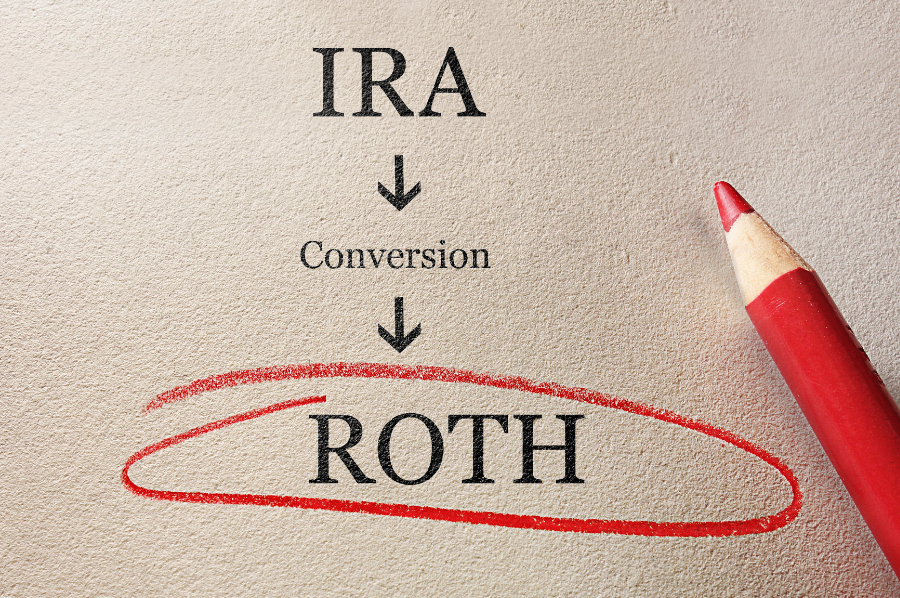


March 31, 2022
Managing your personal finances is very important. For those that budget, save, and invest strategically, there will eventually come a time when they want to start taking withdrawals from their various types of accounts. When you are going to take money out of a retirement account, an investment, or another source of significant capital, you could choose to take a lump-sum distribution. For those that are wondering "what is a lump-sum distribution?," it is important to understand the concept and the advantages and disadvantages that can come with it.
Generally, the lump-sum distribution definition implies that you will take a certain amount of capital out of an account in one large payment as opposed to taking it incrementally over time. In most cases, these distributions will refer to withdrawals from your retirement or other long-term savings investment accounts. However, they could also refer to lottery winning, a pension annuity plan, alternative investments, or selling stocks in a standard brokerage account.
Depending on the type of asset and account that you hold, you may need to wait until a certain date to withdraw funds from your account without penalty. Once you are qualified to withdraw your funds, you will likely be able to make distributions on any schedule that you want. If you would like to take all of your money out at once, you will likely need to contact your brokerage and request to close all investments and liquidate your accounts.
When this happens, they will sell the investments and send you a wire for the amount that you have distributed. If the distribution is taxable, such as with a 401(k), they will likely hold back a percentage to cover your future tax bill.
If you have retirement or other accounts that you want to access, a lump-sum distribution is one option to consider. There are various advantages of this type of distribution that could make it worthwhile.
One of the benefits of taking out a lump-sum distribution is that you can gain access to the funds in your account. If you have a 401(k) or another investment account, you will enjoy the long-term benefits that can come with conservative and disciplined investments. However, you will not be able to use that money for any other purpose.
When you choose a lump-sum distribution from the account, you will have full control over any money that is left. Once the money has hit your account, you can use it to organize the rest of your personal finances, pay off a mortgage, purchase a vacation home, or do anything else that you want.
If you are holding a 401(k) account, pension plan, company stock, or other types of investments, you may be limited to how your capital is allocated. In most cases, 401(k)s only offer a few different diversified funds to choose from. When the money is withdrawn in a distribution, you can put it into an IRA or standard brokerage account that will have much more flexibility in how you invest.
As you are looking to manage your personal finances, there will come a time in which you no longer want to take the risks that come with investing in the markets. If you take your funds out of your accounts, you will no longer have to take on the same risks. This can help protect you from downside risks that can come with holding company stock or investing in actively-managed funds.
While there are clear benefits that can come with a lump-sum distribution, there are some drawbacks to consider as well.
One of the most significant challenges that can come with taking a lump-sum distribution is that you will incur much higher taxes. If you choose to sell assets and distribute funds from a 401(k), traditional IRA, company stock, or personal brokerage account, you will incur taxes on the money that is withdrawn.
For a retirement account withdrawal, it will be taxed at your normal marginal tax rate. Depending on the amount that you withdraw, this could mean being taxed on a portion of your distribution at as high as 37% plus state taxes. However, if you smooth your distributions out over time, you will have a much lower annual marginal tax rate.
If you intend to take your money out and leave it as cash, you also could miss out on investment opportunities. Due to the rising rates of inflation, keeping your money active is very important. If you complete a full withdrawal, your assets could continue to decline in value rapidly due to inflation.
Written By: Heritage Financial Planning Team

Saving for your financial future is one of the most important responsibilities that you have. To ensure that you are able to reach your long-term financial goals, there are several tax-advantaged...
Read More
If you're like most people, you'll likely be employed at more than one place throughout the duration of your career. It's normal to keep moving onwards and upwards to meet your ever expanding goals....
Read More
Receiving a lump sum distribution from a retirement account can be a game-changer in your financial journey. Whether you've just retired or left your job for other reasons, this presents a unique...
Read More
10440 N Central Expressway
Suite 1540
Dallas, TX 75231
214-446-2100
Site Links